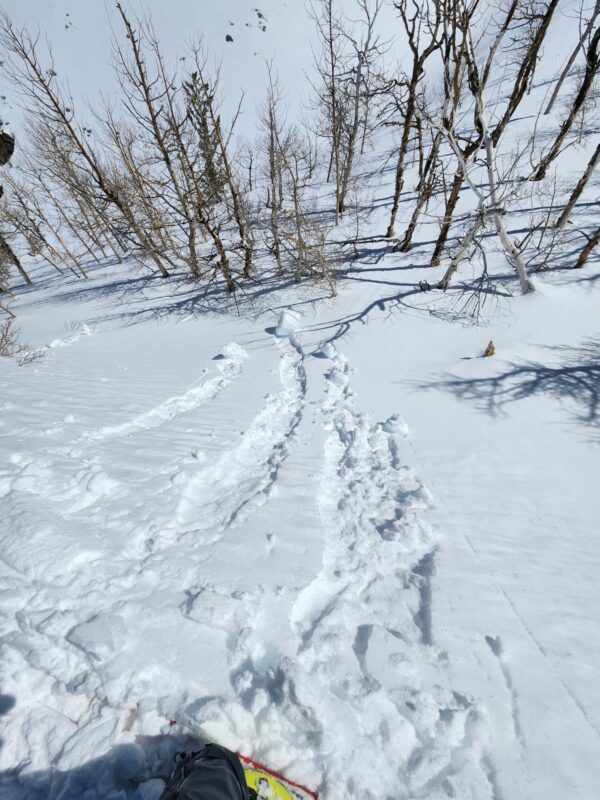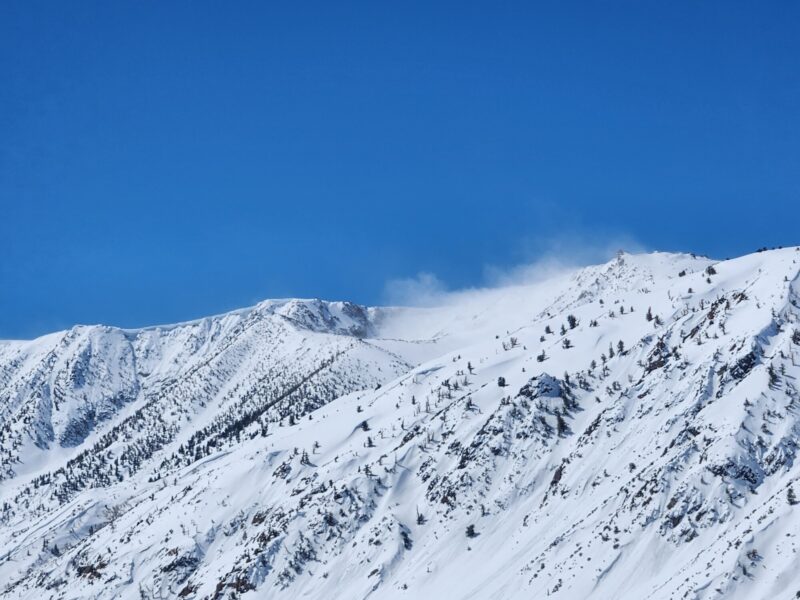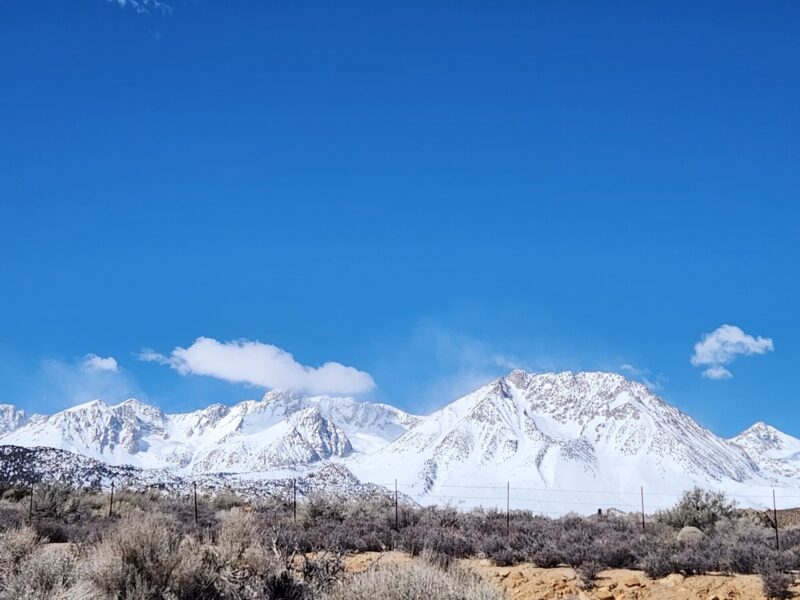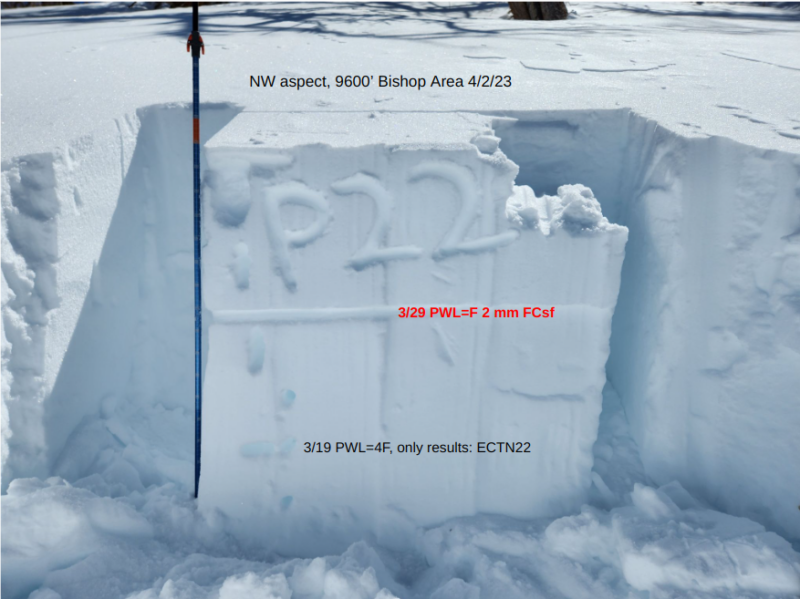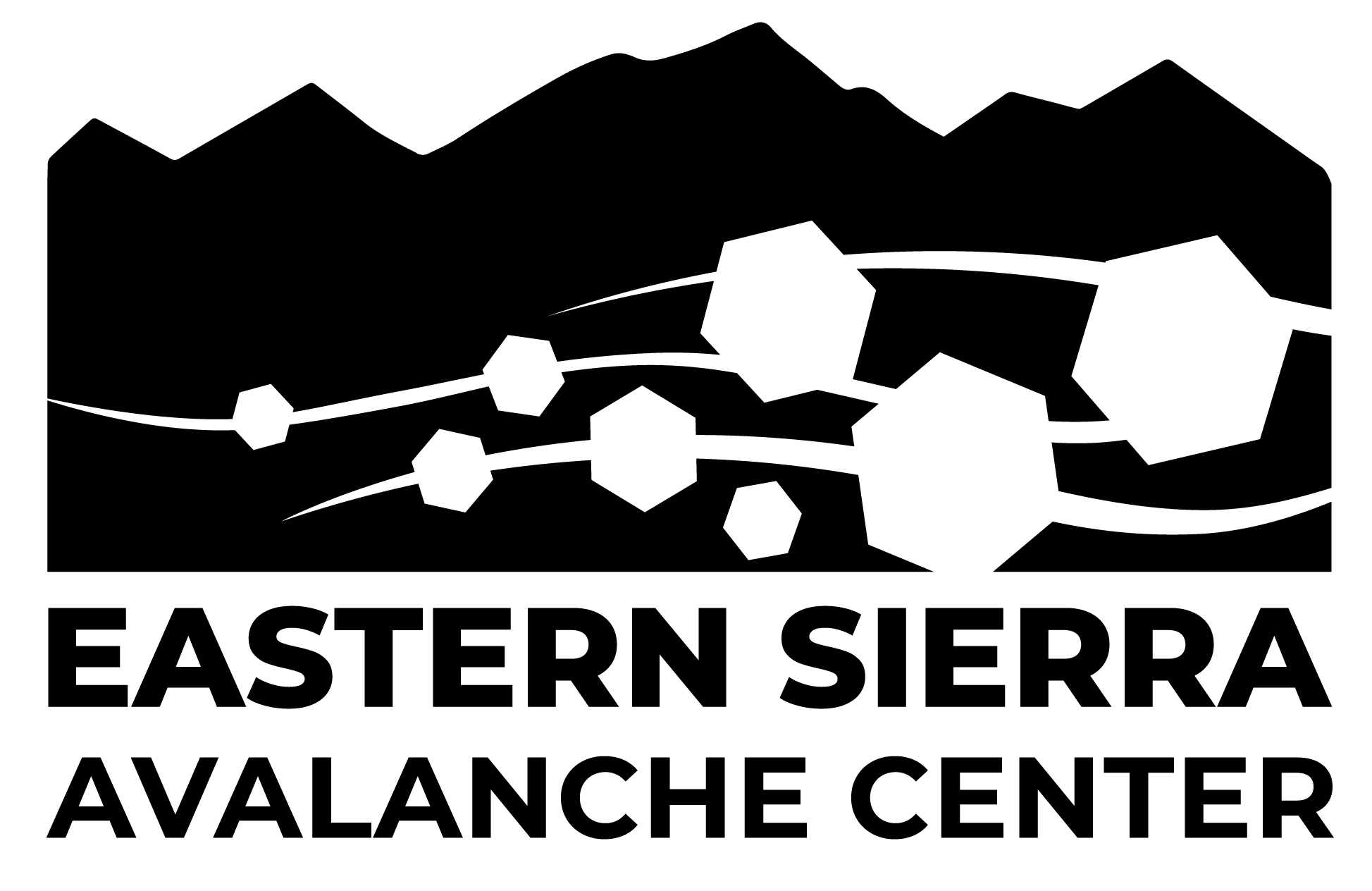Basic Information
Observation Details
Observation Date:
April 2, 2023 - April 3, 2023Submitted:
April 3, 2023Observer:
Clancy Nelson | ESAC ForecasterZone or Region:
Bishop CreekLocation:
Bishop Creek - Avalanche ProblemsSigns of Unstable Snow
Recent Avalanches?
YesCracking?
None ExperiencedCollapsing?
None ExperiencedD1 wet loose avalanches from past 48 hours initiating from rocky areas, mostly on east aspects below treeline.
Key Points
We went for a quick tour in Bishop Creek to assess today’s avalanche problems.
- We saw many recent small loose wet avalanches and rollerballs on west, south, and east-facing slopes near and below treeline. We saw new rollers that ran today at lower elevations on east, northeast, west, and northwest aspects. We tried to stomp some fresh wind slabs off on a northeast-facing test slope and instead triggered big rollerballs and small wet snow avalanches. The dry snow was getting wet for the first time. Northwest and northeast aspects below treeline seemed to be the most likely spots to trigger wet loose slides while we were out (until early afternoon). The snow seemed to be dry on those aspects above 9300 feet and below that elevation until about 11 am.
- Extreme winds were ripping near and above treeeline and we saw intense blowing snow across ridgelines and peaks with big fetches on the upwind side. Huge cornices loom over some east-facing slopes. While we got blown around by strong wind near treeline, and saw snow drifting across some of the slopes where we traveled, we were unable to trigger any slabs. New drifts in our location were dense and pasted to the snow underneath. I suspect that new slabs were forming higher up on leeward slopes, though some of the snow was probably sublimating (vaporizing into the air rather than depositing onto the snow surface) given the power of the wind.
- We probed and dug holes tracking the persistent weak layers in the snowpack on west, northwest, north, and northeast aspects. We found the older layer down about 50 to 70 cm below the surface on these aspects. It was harder than the last time I found it (4F) and did not propagate in any of our tests. The more recent layer averaged about 35 cm below the surface and propagated in our pit (ECTP22) on a northwest aspect where we found it above a melt-freeze crust. This layer, buried on 3/29, was soft (F hard) and consisted of 2 mm faceted grains. Interestingly, we dug for it across the bowl on a northeast aspect and got only small column results (CT12 SP, ECTN10). After seeing how difficult it could be to predict where we could and couldn’t trigger this layer, we kept our terrain choices tight. We skied low-angle, concave slopes one at a time and gave ourselves a wide margin for error by staying away from a convex roll that dropped into a gully.
- The surface on west, east, and south aspects near and below treeline was a hard melt-freeze crust in the morning (zero ski pen.). East aspects seemed to soften before 11 am. Corn o’clock on west-facing slopes was around 12:30-1 pm (5 cm ski pen. moist-wet surface over MFcr).
Media
